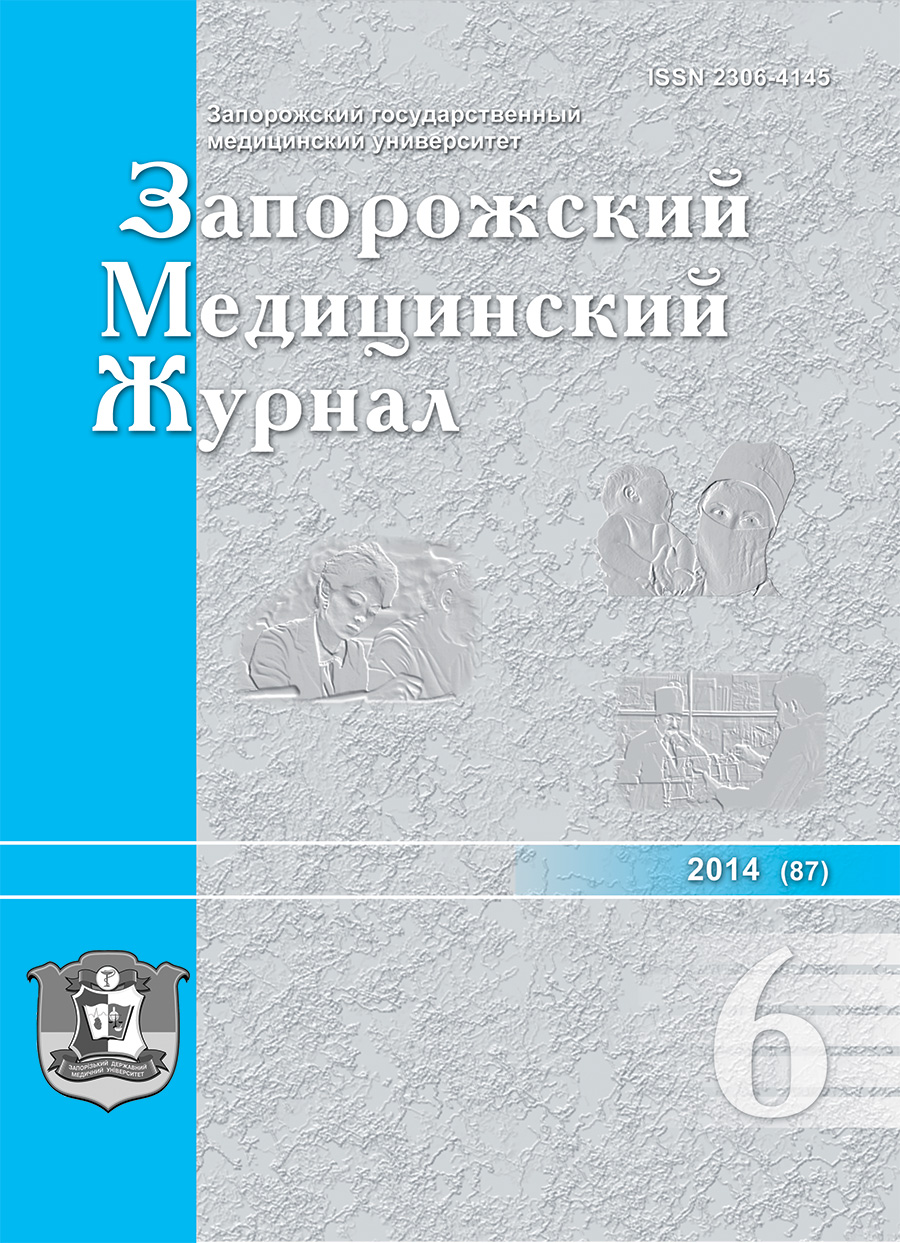Value of circulating galectin-3 for prognosis of cardiovascular events in patients with chronic lymphocytic leukemia in remission
DOI:
https://doi.org/10.14739/2310-1210.2014.6.35662Keywords:
Galectin-3, Chronic Lymphocytic Leukemia, Survival, PrognosisAbstract
Aim. To evaluate the prognostic value of circulating galectin-3 for cumulative survival in patients with chronic lymphocytic leukemia in remission.
Materials and methods. One hundred fifty six out subjects with chronic lymphocytic leukemia in full or partial remission were enrolled in the study.Observation period was up to 12 months. Blood samples for biomarkers measurements were collected. ELISA method for measurements of circulating level of galectin-3 was used. Hemodynamic evaluation was performed by transthoracic echocardiography.
Results and discussion. Two hundred sixteen cumulative clinical events occurred in 51 patients (32,7%) within the follow-up, with their distribution being as follows: 7 deaths, 122 cardiac arrhythmias, 16 cardiac ischemic events, 3 strokes, 30 chronic heart failures and 38 hospital admissions for cardiovascular reasons.
Medians of circulating levels of galectin-3 in free-events subject cohort and subjects cohort with cardiovascular events were 5,16ng/ml (95% confidence interval [CI] = 4,74-5,56 ng/ml) and 16,40 ng/ml (95% CI = 14,80-18,01 ng/ml) (p<0.001). In multivariate logistic regression circulating VE-catherin independently predicted cumulative cardiovascular events (odds ratio [OR] = 1,13; 95% CI = 1,07–1,25; p = 0.003) within 12 months of observation period.
Conclusions. Among patients with chronic lymphocytic leukemia in remission increased circulating galectin-3 associates with increased cumulative cardiovascular events within 12 months.
References
Gardin, J. M., Adams, D. B., Douglas, P. S., Feigenbaum, H., Forst, D. H., Fraser, A. G., et al. (2002) American Society of Echocardiography. Recommendations for a standardized report for adult transthoracic echocardiography: a report from the American Society of Echocardiography's Nomenclature and Standards Committee and Task Force for a Standardized Echocardiography Report. J. Am. Soc. Echocardiogr., 15(3), 275–290.doi: http://dx.doi.org/10.1067/mje.2002.121536.
Stienen, J. J., Ottevanger, P. B., Wennekes, L. van de Schans, S. A., Dekker, H. M., Blijlevens, N. M., et al. (2014) Delivering high-quality care to patients with a non-Hodgkin's lymphoma: barriers perceived by patients and physicians. Neth. J. Med., 72(1), 41–48.
Falcone, C., Lucibello, S., Mazzucchelli, I., Bozzini, S., D'Angelo, A., Schirinzi, S., et al. (2011) Galectin-3 plasma levels and coronary artery disease: a new possible biomarker of acute coronary syndrome. Int. J. Immunopathol. Pharmacol.,24(4), 905–913.
Giordano, S. M., Croci, D. O., &Rabinovich, G. A. (2013) Galectins in hematological malignancies. Curr. Opin. Hematol.,20(4), 327–335.doi: 10.1097/MOH.0b013e328362370f.
Gruson, D., &Ko, G. (2012) Galectins testing: new promises for the diagnosis and risk stratification of chronic diseases? Clin. Biochem., 45(10–11), 719–726.doi: 10.1016/j.clinbiochem.2012.04.009.
Oscier, D., Dearden, C., Eren, E. Fegan, C., Follows, G., Hillmen, P., et al. (2012) Guidelines on the diagnosis, investigation and management of chronic lymphocytic leukaemia. Br. J. Haematol., 59(5), 541–564.doi: 10.1111/bjh.12067.
Aue, G., Lozier, J. N., Tian, X. Cullinane, A. M., Soto, S, Samsel, L., et al. (2011) Inflammation, TNFα and endothelial dysfunction link lenalidomide to venous thrombosis in chronic lymphocytic leukemia. Am. J. Hematol., 86(10), 835–840.doi: 10.1002/ajh.22114.
Jang, W. J., Choi, D. Y., &Jeon, I. S. (2013) Vascular endothelial dysfunction after anthracyclines treatment in children with acute lymphoblastic leukemia. Korean J. Pediatr., 56(3), 130–134. doi: 10.3345/kjp.2013.56.3.130.
Menini, S., Iacobini, C., Ricci, C., BlasettiFantauzzi, C., Salvi, L., Pesce, C. M., et al. (2013) The galectin-3/RAGE dyad modulates vascular osteogenesis in atherosclerosis. Cardiovasc. Res., 100(3), 472–480. doi: 10.1093/cvr/cvt206.
Downloads
How to Cite
Issue
Section
License
Authors who publish with this journal agree to the following terms:
Authors retain copyright and grant the journal right of first publication with the work simultaneously licensed under a Creative Commons Attribution License that allows others to share the work with an acknowledgement of the work's authorship and initial publication in this journal. 

